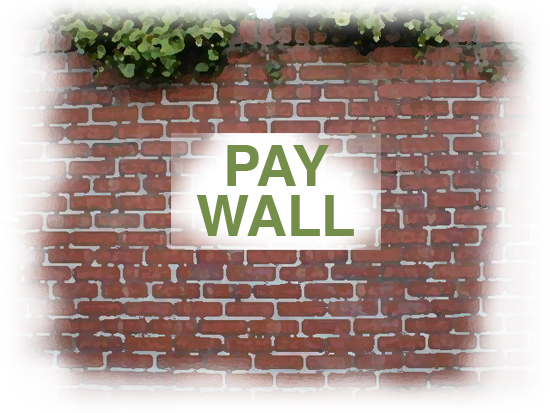Newspapers Have Alternatives to the Paywall, But Will They Explore Them?

It has been a little over a year since we published an article entitled The Future of News and the newspaper industry is still hurting. Many of them are now implementing paywalls in order to read their content, but is this truly the right approach? Not only do paywalls frustrate readers who do not have a subscription, they make for a less open web. In fact, I would go as far to say they stop the free flow of information that the web and Internet as a whole has been known for over the years.
The problem newspapers are facing is simple: we don’t need them anymore or at the very least to the same extent that we once did. The reporters are the ones who have their own contacts and sources – not the newspapers. The Internet allows everyone to have a platform to publish news and information. The reason we had newspapers originally was because they had the power to print and distribute. I think it’s safe to say that obstacle has been eliminated by the Internet.
The one thing newspapers can provide is a reputable name for reports to use when doing research for a story or gathering information. If you say you are a reporter from the New York Times or Wall Street Journal, it means something. The same way it means something in Silicon Valley when you say you write for TechCrunch. The point is reporters, bloggers, journalists, whatever you want to call them can make or break a newspaper or any content provider. How do you think newspapers like the NYT and WSJ established themselves? Right. They had good reporters and journalists.
I’m not saying that every journalist at the NYT and WSJ is good or that every article published by these papers is of interest me (or anyone for that matter). Which is why I stand behind the article we published last year on the future of news where it was suggested that newspapers adopt a form of micropayments. Newspaper readers don’t want paywalls, nor do they want to have to pay twice or three times to read their content on several different mediums, such as the web, the actual newspaper itself, and the iPad. Which is something the Wall Street Journal currently does and I find it insane.
While I don’t believe in the paywall system, I’m not saying people should receive everything for free. In fact, I think people are willing to pay for good content or products. If anything, I think the App Store is evidence of that. If newspapers are insistent on charging us for their content, then micropayments is the way to do it. Pay for the articles you want by the journalists you want to read. Follow the iTunes model – a la carte purchases ranging from $0.69 to $1.29 or even a monthly or weekly subscription to specific section(s) of the newspaper.
Not only would that generate subscription revenue, newspapers would have an even better grasp on their readers preferences and other demographics which would absolutely be attractive to advertisers. It may even allow for highly customized versions of each page tailored based on a readers “profile” which is something Yahoo is trying out, too.
Newspapers are scared and they are showing it. Too afraid to take the major risk and truly evaluate what is going on around them they are resorting back to their comfort zone of subscription based services. Someone needs to get in that industry and just shake it up. Work on partnerships to syndicate your content through other mechanisms aside from your site itself. See what The Guardian is doing for an example. Have newspapers ever consider creating a Facebook app that allowed people to read the news straight from Facebook itself? Just another possibility. And there are more. Many of which seem will remain unexplored by this sinking industry; which is unfortunate.